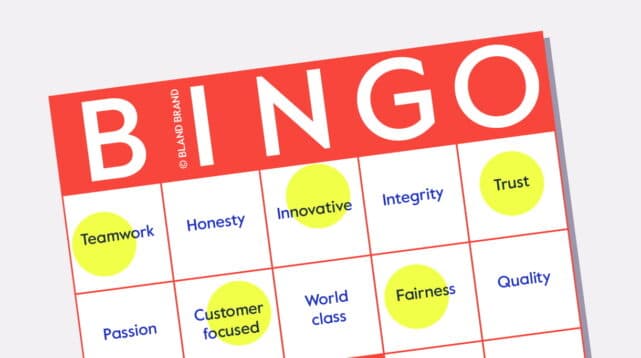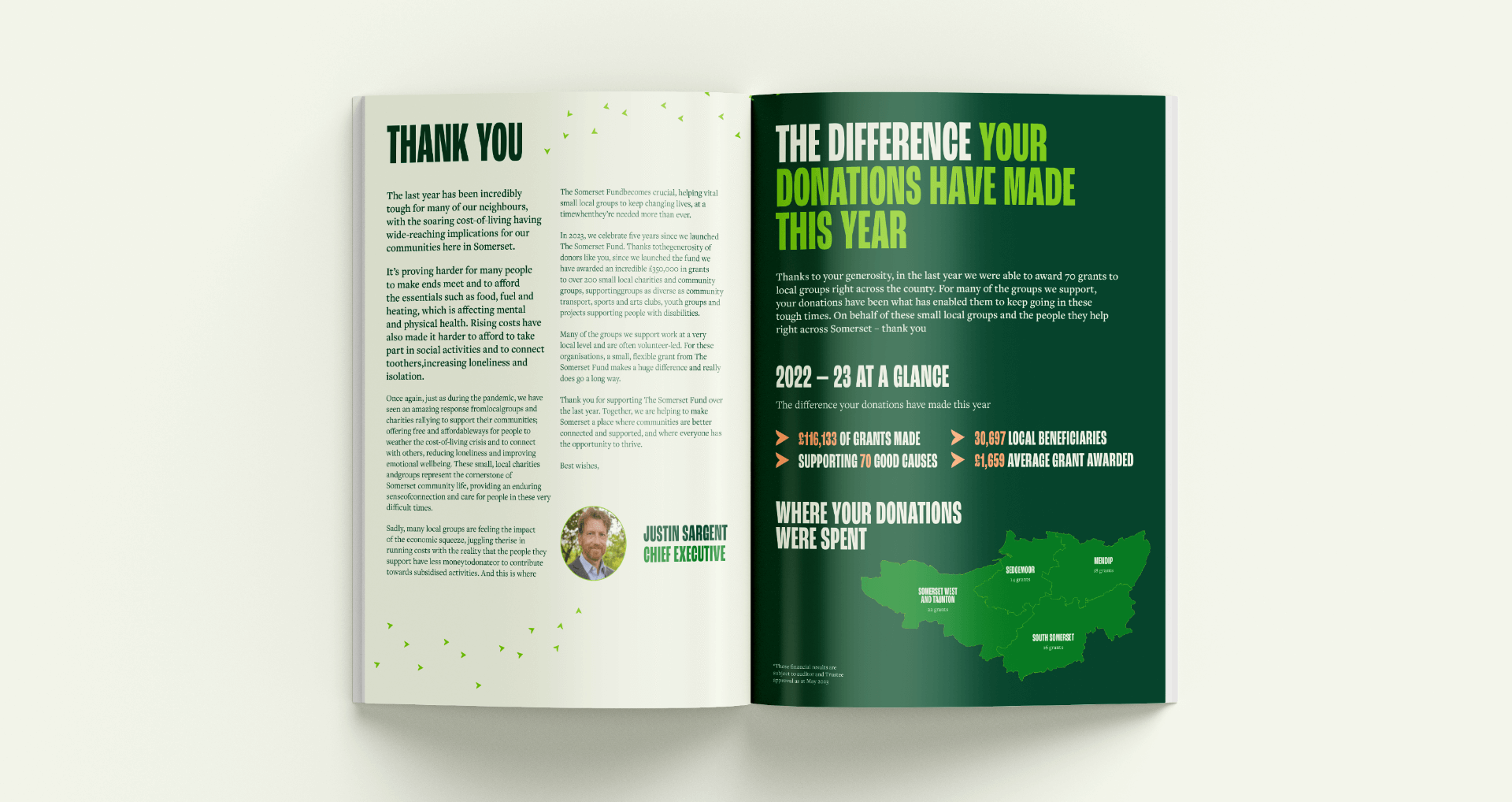Employer branding – how to make your brand values matter
Creating values that are clear, meaningful and actionable
A brand identity is not just a customer-facing asset. It has a significant role to play for you as an employer, especially when your tech or creative firm is looking to build or grow its team.
When you’re creating your brand identity, you distil down to your brand DNA by defining your brand values. But of course, defining them is just the start, because values only become meaningful when they’re brought to life. After all, what use are values that no one can remember or relate to in their day-to-day?
Far too many businesses that I work with admit to having spent money in the past on a consultant that helped them define and articulate their vision, only for that precious document to gather dust and get forgotten.
So how can you make sure that doesn’t happen to you? How can you embed your firm’s values not only within your organisation, but also to the people who matter to you in the outside world?
How can you communicate your values to prospective new talent so that they feel attracted to you as an employer and understand them enough to be able to self-qualify themselves before making their first approach?
Employees stay with companies whose values they find resonate with theirs and consumers stay with brands whose values they resonate with and who show that they are valued.
Rishad Tobaccowala
A five-part framework
Following this five-part framework to make sure your values resonate with your team, has the added benefit of those values also being meaningful to your clients, stakeholders, prospects and partners.
Define → Test → Articulate → Embed → Communicate
Define
Let’s start at the beginning. Making sure your team gets involved in defining your values will get you on the right track. When you were starting out with your business, its values came from you and were inextricably linked to your personality and aspirations. When you build a team around you – that link loosens – you no longer have control over how people answer the phone, how they conduct themselves in meetings, how they make decisions or how they act with their colleagues.
Conducting a company-wide survey, where you gather every team member’s top three values, is a great starting point. Once everyone’s contribution is in, you workshop the values, either as part of a wider brand discovery session or purely as a self-standing values exercise. What you’re looking for is a shortlist of values you could see yourselves getting behind. Ending up with four or five values is a good rule to stick to – it’s not too short as to be too basic and not so long that you’ll never recall them.
Interrogate the values you’ve come up with:
- Are they distinct, authentic, compelling?
- Does each of the values help you stand out as a brand?
- Can the value be brought to life in the way you and the team behave?

TIP: Choosing ‘bland’ values rather than brand values is what, all too often, can cause you to fail at this first hurdle. One good way of checking the merit of a value is looking for its inverse. Is what you’re putting forward really a value or just table stakes? Take ‘Professional’ – are there really ever instances when you wouldn’t act professionally or would choose to work with someone who values a lack of professionalism? Values such as ‘Honest’ and ‘Innovative’ (and the list goes on) fall into the same category. This is not to say that the words themselves can’t be values, just that they require more unpacking and a more nuanced approach which can come from working them into a short phrase.
Test
People like to do business with people who share their values. So, as well as being relevant to your team, are the values you’ve come up with meaningful to your customers or clients? Are they more likely to make them do business with you? A solid brand discovery process involves testing how your values do in the real world through customer interviews where you find out what your customers value and care about.
Articulate
Who am I to question the likes of Lego? But on the face of it, their values – six single words – seem a little simplistic. I don’t doubt for one minute that there’s more behind them than what they share publicly online (possibly whole chapters dedicated to each in their brand book) but using single words like this can leave too much open to interpretation and doesn’t provide enough to inform your team’s day-to-day actions.
imagination, creativity, fun, learning, caring and quality
In contrast, the way John Lewis & Partners expresses their values provides a great ‘doing’ benchmark:
Do right: We act with integrity and use our judgement to do the right thing.
All or nothing: We put everything we have into everything we do.
Give more than you take: We put more in, so everyone gets more out.
Be yourself. Always: We’re quirky, proud and at our best when we are free to be ourselves.
We not me: When we work together anything is possible.
Pay particular attention to, and invest in this stage. Bringing in a copywriter, one that specialises in brand development copy is a wise move. They’ll be able to craft your values into meaningful, memorable phrases using plain English that truly reflects your brand personality and, if appropriate, using an element of wit. Another valuable approach that effectively bridges that gap between coming up with values and bringing them to life, is coming up with a Manifesto. It’s a really creative way to inject meaning and energy into your values, and comes with the added benefit of providing a source of inspiration for your content marketing strategy, when you’re thinking about blog and social media posts, company videos and email marketing…

Embed
Once you’ve consulted with your team, listened to your audience and fine-tuned how you want your values to be documented, a Values in Action workshop is a great way to further embed them with your team. We run Values in Action workshops for clients to begin ‘living’ the values they’ve developed.
The workshop is a way of getting the team to drill down to what each value means to them personally. Some of the areas we explore include asking why each of the values is so important to the company and what specifically is required from team members to keep those values alive.
Here’s what Alan Furley from ISL Talent had to say about this approach to embedding the values you’ve identified as key to your employer brand identity:
Communicate
Making sure you communicate your brand values fully and consistently across all touchpoints is the final stage of the brand value framework.
Your brand guidelines should always go beyond the visual, with tone of voice guidance capturing elements beyond the obvious. Include real-life examples, tips and suggestions for how to capture your values in how you and your team speak. Your company website is an important port of call for prospective talent – if your values include diversity – demonstrate it in your team photography, so that future employees can see that you truly live your values.
Create a content strategy that is informed by your values. This means having content pillars that reference them – themes you know you need to talk about in short- and long-form posts, videos and talks. Also, don’t forget the manifesto idea mentioned in the ‘Articulate’ phase – it’s a great basis for content that shows you bringing your values to life.
If this post has made you curious to discover how you can define, capture and communicate your values in the day-to-day, or you’re thinking you could benefit from a Values in Action workshop, let’s get talking – arrange a 30-minute, no obligation chat here.




